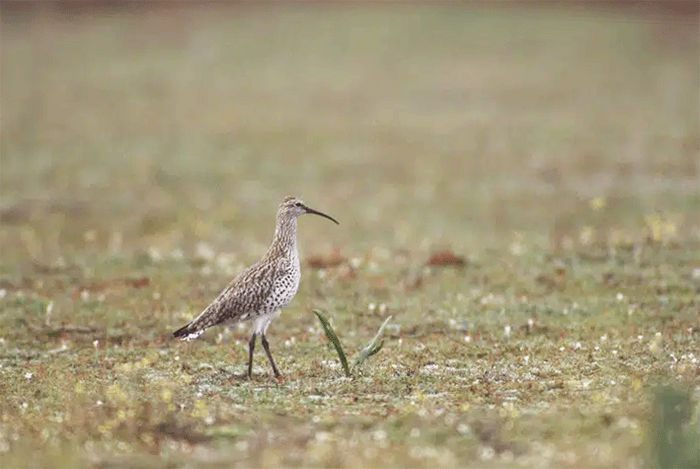Slender-billed Curlew Declared Extinct
IUCN confirms the loss of a once-widespread Western Palearctic wader after three decades without a verified record

What has happened
The Slender-billed Curlew Numenius tenuirostris has been formally reclassified as Extinct following a 2025 reassessment. This decision recognises that, despite intensive searches across its former range, there have been no verified sightings since the mid-1990s and the species no longer survives.
For many in European and North African conservation, this is a sobering moment: a globally extinct bird of the mainland Western Palearctic in modern times, lost within living memory of those who watched its final years.
A brief timeline
The last indisputable record was at Merja Zerga, Morocco, on 25 February 1995. A possible bird in Hungary in 2001 was never confirmed. In the decades since, coordinated surveys across breeding, staging and wintering sites have failed to locate the species.
On 10 October 2025, the Red List update aligned with mounting scientific evidence that the species was functionally gone, moving it from Critically Endangered (Possibly Extinct) to Extinct.
The Druridge Bay debate: accepted, then overturned
From 4–7 May 1998, a small curlew at Druridge Bay, Northumberland, was identified by many observers as a first-summer Slender-billed Curlew. After lengthy assessment it was accepted and added to the British List, becoming a celebrated and much-discussed record.
Subsequent scrutiny – drawing on photographs, video and a deeper review of identification criteria – led both the British Birds Rarities Committee and the British Ornithologists’ Union Records Committee to re-examine the case. In 2013, on split decisions, the identification was ruled Not Proven and the species was removed from the British List. The episode remains a touchstone for rigorous, evidence-led assessment of exceptional vagrancy claims.
Why it vanished
Multiple pressures likely combined to tip the species into oblivion. Historical over-exploitation along Mediterranean flyways, degradation and loss of wetlands, and changes on steppe breeding grounds eroded numbers through the twentieth century. By the 1990s, the population had dwindled to a vanishingly small remnant, vulnerable to any further shock.
As with many lost species, precise apportionment of causes may never be known, but the pattern is familiar: when long-distance migrants lose safe places to rest and feed, decline can be rapid and recovery vanishingly unlikely.
Why this matters for wader conservation
The Slender-billed Curlew’s fate is a warning light for migratory shorebirds reliant on a chain of intact wetlands from Siberia to North Africa. Effective protection of staging sites is not optional - it is existential. The decision also underlines a hard truth for conservation planning: delay carries a real risk of arriving too late.
For UK conservationists, the message resonates. Our own curlews and other waders depend on safeguarding estuaries, shingle and dune systems, saltmarsh and inland floodplains, alongside tackling disturbance and illegal killing along flyways. Action that is early, coordinated and landscape-scale is what prevents the next obituary.
How extinction is decided
Declaring a species extinct is deliberately conservative. The standard requires exhaustive evidence that no reasonable doubt remains the last individual has died. For Slender-billed Curlew, this drew on curated museum and field records, targeted surveys, statistical extinction-date modelling and the complete absence of credible encounters for three decades.
The designation closes a long chapter of hope and uncertainty. It also clears the way to redirect finite resources to species where intervention can still change the outcome - while ensuring the Curlew’s story remains an enduring case study in what must not be repeated.
What should happen next
Priorities now include: doubling down on protection and restoration of key wetlands; enforcing anti-poaching measures on migration bottlenecks; investing in monitoring that detects steep declines early; and backing international agreements that bind countries to safeguard shared migratory routes.
October 2025
Get Breaking Birdnews First
To get all the latest breaking bird news as it happens, download BirdAlertPRO for a 30-day free trial – no payment details required – and access exclusive first-time subscriber offers.
Share this story







